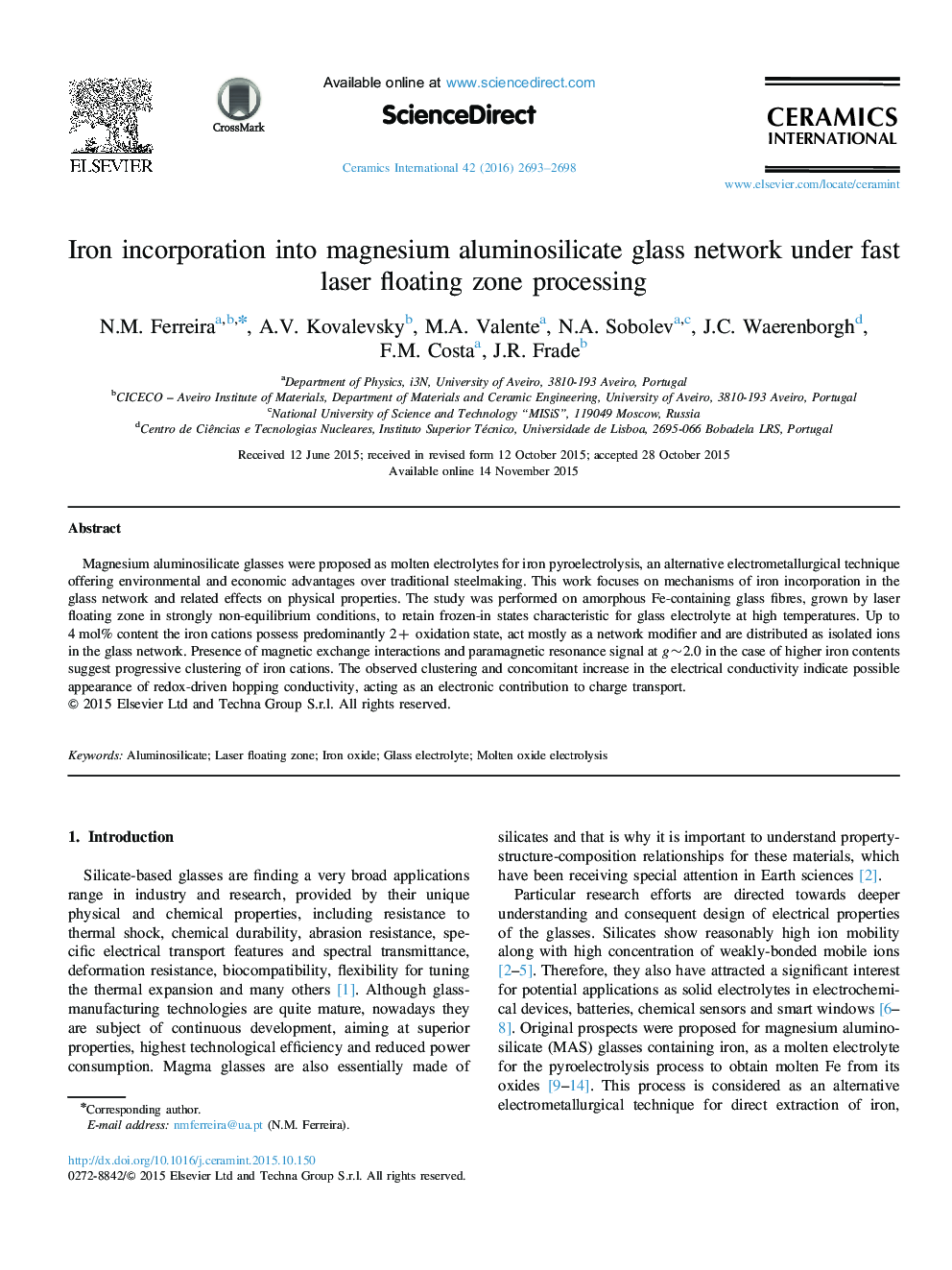| Article ID | Journal | Published Year | Pages | File Type |
|---|---|---|---|---|
| 1458965 | Ceramics International | 2016 | 6 Pages |
Magnesium aluminosilicate glasses were proposed as molten electrolytes for iron pyroelectrolysis, an alternative electrometallurgical technique offering environmental and economic advantages over traditional steelmaking. This work focuses on mechanisms of iron incorporation in the glass network and related effects on physical properties. The study was performed on amorphous Fe-containing glass fibres, grown by laser floating zone in strongly non-equilibrium conditions, to retain frozen-in states characteristic for glass electrolyte at high temperatures. Up to 4 mol% content the iron cations possess predominantly 2+ oxidation state, act mostly as a network modifier and are distributed as isolated ions in the glass network. Presence of magnetic exchange interactions and paramagnetic resonance signal at g~2.0 in the case of higher iron contents suggest progressive clustering of iron cations. The observed clustering and concomitant increase in the electrical conductivity indicate possible appearance of redox-driven hopping conductivity, acting as an electronic contribution to charge transport.
